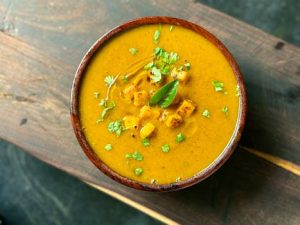The Power of Fashion in Cultural Expression
For centuries, fashion has been a way to express one’s creativity, personality, and even cultural identity. Every country, every city, and every community has its own unique fashion styles, influenced by its history, traditions, and environment. The power of fashion goes beyond just aesthetics; it serves as a form of cultural expression, representing the values, beliefs, and customs of a society. In this modern age, where diversity and inclusivity are becoming increasingly important, fashion continues to play a crucial role in breaking down barriers and celebrating individuality. Let’s explore the power of fashion in cultural expression and how it has impacted society throughout history.
The History of Fashion as Cultural Expression
Fashion has always been an integral part of human culture and history. From ancient civilizations to modern-day societies, the evolution of fashion has been shaped by political, social, and economic influences, making it a reflection of the times. In ancient civilizations like Egypt and Greece, clothing was used as a status symbol, with the wealthy wearing lavish fabrics and the poor donning simpler attire. During the Renaissance period, fashion was heavily influenced by art, with elaborate dresses and intricate designs seen as a sign of wealth and sophistication.
As the world became more connected through trade and exploration, fashion began to spread across continents, giving rise to global fashion trends. However, cultural expression through fashion was still prevalent, with each region putting their own spin on popular styles. For example, the traditional Japanese kimono, with its intricate patterns and vibrant colors, is a representation of their culture and values. Similarly, the Maasai tribe in Kenya is known for their strikingly vibrant, beaded jewelry, which symbolizes their community, wealth, and social status.
The Role of Fashion in Cultural Identity
Fashion is more than just a means of self-expression; it is a way to affirm one’s cultural identity. Throughout history, certain items of clothing or accessories have become synonymous with a particular culture or community. For instance, the Indian saree is instantly recognizable as a symbol of Indian culture, and the traditional Colombian poncho represents the Indigenous communities’ heritage. These iconic pieces of clothing carry immense cultural significance and continue to be worn proudly by individuals as a way to connect with their roots.
In recent years, there has been a push towards cultural diversity and representation in the fashion industry. Designers from different cultures are incorporating traditional elements into their collections, and models of varying ethnicities are being featured on runways and in campaigns. This shift in focus has not only allowed for more inclusivity in the fashion world but has also given a platform for cultures to be celebrated and shared.
The Influence of Fashion in Breaking Stereotypes
Fashion has the power to transcend stereotypes and break down barriers. In the past, certain items of clothing were associated with specific genders or social classes, limiting individuals’ self-expression. However, today, fashion is used as a tool to challenge these societal norms and redefine beauty standards. The rise of gender-neutral and unisex clothing has given people the freedom to dress however they please, regardless of societal expectations.
Moreover, fashion has been used as a form of protest and activism, challenging discrimination and promoting equality. For example, the Afghan burqa, often seen as a symbol of oppression, has been reimagined by fashion designers to bring attention to gender inequality in many countries. By using fashion to make a statement, individuals can bring attention to important issues and spark change.
The Future of Fashion as Cultural Expression
In the age of social media and globalization, cultural expression through fashion has become more accessible than ever. With the internet, people can share and showcase their culture through their fashion choices, creating a more diverse and inclusive community. Fashion shows and events are also becoming more culturally diverse, showcasing a range of styles, designs, and models from different backgrounds.
As we move towards a more globally connected society, the power of fashion in cultural expression will continue to evolve and grow. It has the ability to bring people together, celebrate diversity, and challenge societal norms. From traditional clothing to modern-day couture, fashion remains a powerful medium to showcase the beauty of cultural identity.
In Conclusion
Fashion has always been a reflection of society, and as civilization evolves, so does fashion. It holds a deep and rich history of cultural expression, serving as a bridge that connects people, communities, and traditions. Today, it continues to play a vital role in shaping our perception of culture and diversity, and its influence is only growing. The power of fashion in cultural expression is undeniable, and as we embrace individuality and inclusivity, we can look forward to a future of even more diverse and impactful fashion statements.










